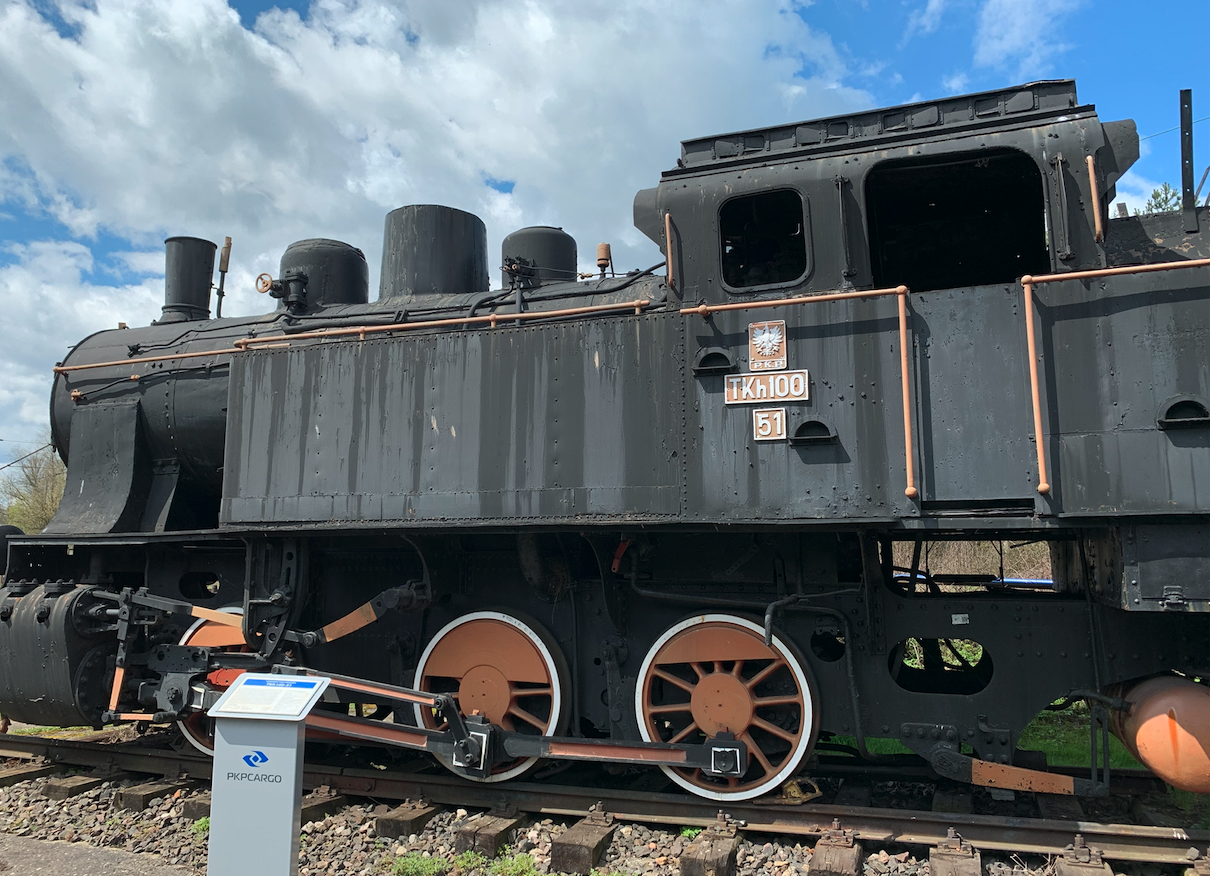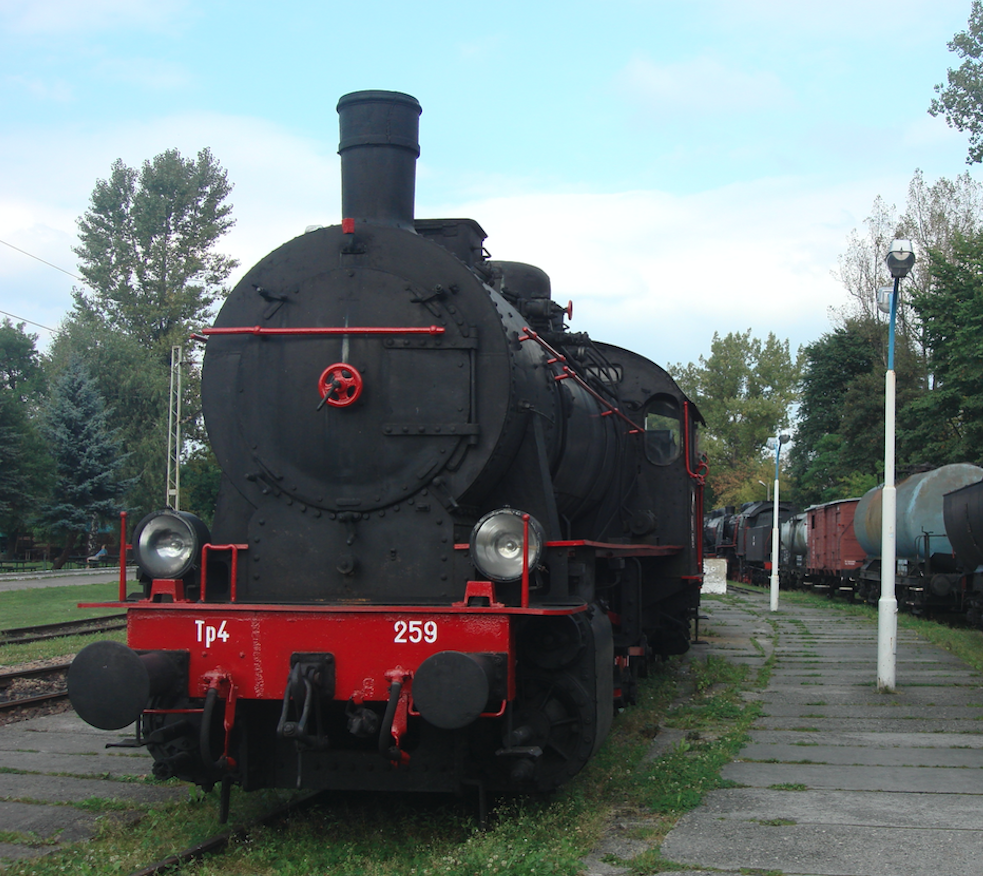Kraków 2022-02-01
History of steam locomotives in the 19th century.
Part 05.2022.
Prussian steam locomotives.
In the period 1850 - 1900, more than 20 steam locomotive designs were developed and put into production in German lands, especially in Prussia. Due to the rapid expansion of the railway network in Western and Central Europe, it was necessary to build new steam locomotives for various purposes: fast, passenger, freight and shunting, as well as locomotives for industry. As a result, Prussian locomotives were built quickly, regardless of their appearance and artistic details. They were painted uniformly with black paint. As a result, Prussian steam locomotives from the second half of the 19th century are ugly.
Although the 1'B axle system was already obsolete, in 1884, Henschel built a P3 steam locomotive in Mecklenburg. The steam locomotive was produced in as many as 9 factories in the German federal states. It was a standardized type of locomotive. A total of 783 copies were built. This type of locomotive was needed for secondary railroads with less pressure on the rails and built with multiple bends. After the Great World War, 13 P3 locomotives were handed over to PKP, which received the Polish designation Oc1. Steam locomotives were operated until the Second World War.
T-T data of the Prussian P3 steam locomotive, in PKP type Oc1:
Production 1884 - 1907. Locomotive service weight 36 700 kg. The service weight is 28 500 kg. Depending on the tendra, the overall length is 14.80 - 15.25 m. The diameter of the driving wheels is 1.75 m. The diameter of the running wheels is 1.15 m. Tender type 11C10. It took 10-11 m3 of water and 4 tons of coal. Boiler with steam with a pressure of 12 at. Boiler heating area from 95 m2 to 102 m2, depending on the boiler manufacturer. Grate area 1.80 - 1.95 m2. Design speed 90 km / h.
Steam locomotive type S3 in PKP Pd1.
In the discussed period, there were many locomotives with the 2'B axle system. In Prussia, they were designed from 1860 to 1906. There was a whole series of Prussian locomotives of the S1 to S6 type and the P4 type. The most interesting was the S3 steam locomotive, which was designated Pd1 by the Polish State Railways. Production was carried out in the period 1893-1904 in eight factories.
The constructor was the engineer August von Borries, who made a business trip to the USA and England in order to gain experience in local factories. Its task was to build a fast and economical locomotive for fast trains in Prussia. The designer opted for the 2'B axle system, instead of the common but obsolete 1'B. The designer used a twin steam engine and an Allan internal timing gear. 148 were built. Later, the constructor of the locomotive improved and used a two-cylinder coupled steam engine with outer cylinders and a modern Heusinger piston timing.
Until 1905, 1,027 steam locomotives in total were built for the Prussian railways. Due to the successful design, the locomotives were ordered in large numbers and soon they mastered most of the fast traffic in Prussia. In 1898, the first Prussian S4 steam locomotive was experimentally equipped with a steam superheater. From 1905, S5 steam locomotives were produced, with a standard steam superheater. In Poland, locomotives type S5 and S6 (reinforced S3) in PKP received the designation Pd4 and Pd5.
The S3 type locomotive could pull a train weighing 130 tons, along a horizontal track at a speed of 100 km / h, and at a speed of 90 km / h, a train weighing 200 tons, and at a speed of 80 km / h weighing 280 tons.
T-T data of the S3 steam locomotive, in PKP type Pd1:
2'B axis system. The service weight of the locomotive is 50 160 kg. The length of the locomotive is 10.70 m. Length with the tender 16.50 - 17.60 m depending on the type of tender. The diameter of the driving wheels 2.00 m. The diameter of the rolling wheels 1.00 m. The boiler with a steam pressure of 12 at. Boiler heating area 117 - 118 m2. Grate area of 2.30 m2. Design speed 100 km / h. Pressure on the rails 15 400 kg.
Prussian steam locomotives in the C axis system.
During the period we are discussing, the C-type axle system was popular. Several designs were developed, including the T3, T7, G3, G4 types, and the VV and Fc types. The T3 and T7 steam locomotives were developed in 1882. They were small tendons with a C axis arrangement (0-3-0) for local mixed traffic and shunting works. They were produced in large numbers in several factories, for the state railways in German federal states and for private railways. These locomotives were also used in PKP and Polish industrial plants, even until the 1960s. At the Polish State Railways, they were designated TKh100.

Prussian steam locomotives in the 1'C axis system.
In 1893, a G5 steam locomotive was developed in Prussia in the 1'C axis system. The locomotive was built in several successively improved models. By 1901, 268 were produced, and by 1914, about 500 were produced. After the Great War, the Polish State Railways operated 26 G5 steam locomotives of the first type, which were designated Ti1 by the Polish State Railways. A total of 313 steam locomotives of all G5 versions were operated in Poland, as Ti1, Ti2, Ti3, Ti4. The G5 type locomotives were of poor performance, uneconomical and failing.
T-T data of the G5 steam locomotive, type Ti2 in the Polish State Railways:
1'C axis system. Service weight 51,100 kg. Length with tender 16.18 m. Diameter of driving wheels 1.35 m. Diameter of rolling wheels 1.00 m. Steam pressure in the boiler 12 at. Design speed 65 km / h.
Prussian steam locomotives in the D axis system.
The G7 and G8 steam locomotives are Prussian D-axis locomotives. The G7 type was developed in 1894 and the G8 type was developed in 1895.
The locomotive, which in Poland has the designation Tp4, is a Prussian design and production of the G8¹ series, intended for freight trains. The layout of the D axis, that is (0-4-0), and in Poland it is marked with a lower case letter "p". Steam locomotives of this type were produced in the period 1913-1921.
The G8¹ series steam locomotives were the most numerous and successful series of Prussian steam locomotives. It was the last Prussian freight steam locomotive without a front rolling axle or a bogie, which made it easier for the locomotive to fit into the curves and allowed for higher running speed. Due to the shifting of the axes to the sides, the locomotive covered bends with a radius of up to 100 m. Compared to its predecessors, the steam locomotive has a much larger boiler, superheater, and the pressure in the boiler was increased to 14 at. The locomotive is longer than its predecessors. The wheelbase of the driving axles was increased to 4.70 m. The wheel diameters were increased to 1.35 m. The subsequent versions of the locomotives received new equipment and electrical installations. A typical 17C1 tender holds 16.5 m3 of water and 7 tonnes of coal.
The G8 series locomotives were produced in Prussia and in the Prussian partition. About 5,000 copies were built in total. Prussian Railways received 4,948 locomotives of the G8 series. After the Great World War, the locomotives were delivered to France, Belgium and Poland as war reparations. After 1918, the Polish State Railways received 459 (other sources say 462) copies. Additionally, Poland ordered 50 new locomotives.
The Tp4 locomotive was strong and could pull a train weighing up to 1,050 tons at a maximum speed of 55 km / h. Due to the large mass of the locomotive, it was intended for the main routes. Until 1930, the Tp4 and other locomotives (Tr20, Tr21, Tw1, Tw11, Tw12) were the basic locomotives used in the Polish State Railways. They were gradually replaced by Ty23 locomotives.
After the Second World War, in 1945, Poland had 288 Tp4 locomotives, but only a few were those that were used by the Polish State Railways before the war. Due to technical progress, the Tp4 locomotives were slow and weak. Therefore, they were moved to work as heavy shunting locomotives, where they worked for many years. From 1970, the Tp4 locomotives were gradually decommissioned. They were bought by workplaces that had their own large sidings. The last locomotives: Tp4-148 and Tp4-217 were withdrawn in 1985. Until now (2022), several Tp4 steam locomotives have survived: Tp4-148 and Tp4-217 belonging to the Railway Museum in Warsaw (Museum Station), and Tp4-259 in Chabówka.
T-T data of the G8 steam locomotive, type Tp4 in the Polish State Railways:
Years of production 1913 - 1921. The D axis system, i.e. (0-4-0). Service weight 69,900 kg. Length 10.88 m. Length with tender 18.29 m. Type tendra 17C1. The diameter of the driving wheels is 1.35 m. The heating area of the boiler is 140.5 m2. Superheater heating area 46 m2. Grate area 2.66 m2. Design speed 55 km / h.

Advantages and disadvantages of steam locomotives.
The main disadvantage of steam locomotives, compared to diesel and electric locomotives, is their low energy efficiency. Only 8 - 15% of the generated energy is spent on work. The pressure generated in the boiler, ranging from 4 atm to 16 atm, is very high and the boilers exploded frequently with fatal consequences.
Nevertheless, the steam locomotives were in series production for a very long time. In Poland, until 1963, for industry.
The advantage of steam locomotives is their high durability. With proper use, maintenance of pressure regimes and maintenance, 50 years of steam locomotive operation was not a phenomenon. The weakest element is the boiler. Usually, one steam locomotive had two or three boilers during its service.
The advantage was the lack of complicated devices and electronics that fail most easily in difficult operating conditions. In Europe, steam locomotives were used for a long time. In England until 1968. In West Germany until 1975. In the GDR until 1989. In Poland until 1993. To date (2022), there are about 50 steam locomotives in Poland that can be brought into service, and of this number, about 15 steam locomotives are periodically lit for Retro trains.
Written by Karol Placha Hetman
